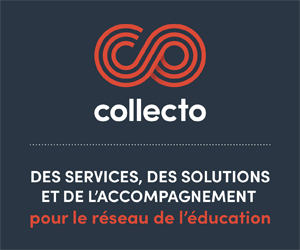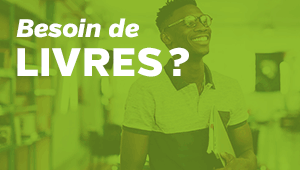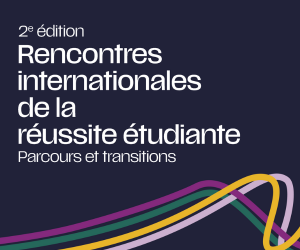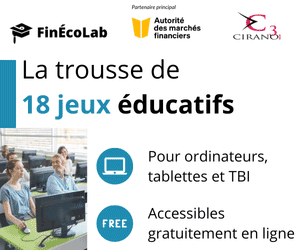Articles
Finding one’s way in the community
By Mis. Joy Blake who holds a Bachelor of Arts in Literature from Mount Allison University and a Cumulative Bachelor’s degree in Education and French as a second language from University Laval. She recently completed her Master of Education degree from Bishop’s University. The project she describes in this article was the culmination of her work at Bishop’s. Joy has been teaching at the Cegep de Granby Haute-Yamaska since 1994.
Go into any classroom in any CEGEP and conduct a two-minute survey. How many of the students in that room know exactly what they want to do as a future career? Next, how many are hesitating between two or three options? Finally, try to find out how many have absolutely no idea what they want to do with their lives. Now, find a group of students who are undertaking the transition semester at CEGEP and trying to decide upon a programme or career option. If you were to ask them the same questions, in all probability, you will find that there will be far more hands raised to the option of “I have no idea.”
All across Quebec, and indeed across the country, young people are struggling with making career choices. Lucky are those who find a true passion for a field or career and have the means to reach their dreams, but the reality we see around us is that many students do not know where they are going nor how to get there. In the fall semester of 2011, I tackled that problematic situation with 39 students. The results demonstrated that through community service learning, an experiential learning strategy practiced throughout the world, students could confirm, question, or even make career decisions; help the community; learn new skills; and gain a level of confidence that they will be able to carry with them throughout the rest of their lives.
Critical Thinking: towards a new paradigm
As teachers, we are asked to develop our students’ ability to think critically. One definition of critical thinking suggests that students use their reasoning skills to support their point of view, make a judgment or establish a preference for one idea over another all by using strong, clear arguments. However, like John Dewey before her, Jane Roland Martin, an American educational philosopher from the University of Massachusetts and prolific author on education, finds that those skills are too masculine and do not take into account a more humanistic vision. She adds three Cs – connection, concern, and care – and puts forth the notion that we should also consider community. Martin feels that while the traditional view of critical thinking may work well on paper, once we have real humans in front of us and real decisions to make with and about them, we cannot simply ignore our intuition; we have to demonstrate compassion. She opens a new realm to critical thinking.
Community Service Learning
Community service learning (CSL) is an experiential pedagogical method that as the name suggests, removes students from the classroom and takes them into the community. Begun some 30 years ago, its goal is to allow students to serve in community-based organizations while learning more about their individual fields of study. In fact, in many ways, it is like the meeting point between an internship, which oftentimes may be conducted at a “for-profit” business, and simple volunteering. The objective of CSL is for students to target a career or field that seems interesting to them or that reflects their future path, find a community organization that touches that field, and give time to the organization. The students are also asked to reflect on their involvement with the organization. It is a true win-win situation in that the student can learn more about a career, and the community organization will receive some much-needed hands. There is no doubt that it is challenging because the teacher has to build a course around the service and still manage to cover the curriculum.
In my initial research, I discovered that universities around the world, including three here in Quebec, have CSL programs already firmly established albeit many do not use that moniker. However, I could not find any CEGEPs that seemed to have official projects set up. I felt I was taking my students in a new direction.
Community Service 103
While this form of teaching/learning works with students from every program, it is most often touted as a means of motivation for students who may be beginning their college or university career. CSL helps students focus on career choices and can increase their confidence. However, not many students are ready to embark upon a course where they will have to give up some time to go out into the community. Forced volunteering, in my opinion, does not guarantee a connection, so students have to see the benefit before embarking on the project. That said, I undertook the project with students in the advanced level (103) of the ESL program in the B block the course where students are asked to develop understanding and skills regarding their future career. They were all at least in their second year of collegial studies, but like all students, many of them were struggling to make career decisions.
Months before the course began, I started contacting community organizations and explained the project. What kind of work did they do that would touch my students’ fields? Since we are a small CEGEP, we teach multi-program courses, so I had to consider that I would be teaching students from almost every department. Would my students have to do a training period? Would my students have to agree to a minimum number of hours in order to work with the organization? Were there any safety hazards? Could I send two students to the same place? Would they be willing to take on students for a short time? The response was overwhelming: Send us your students.
In class, the response was more hesitant. Do we really have to do the project? No, but the alternative project is even longer and more arduous. Could we work together? Ideally, no, but it depends on the number of doors that open to us. How many hours do we have to give up because you know that we work and have other classes…? Yes, but as you see in the course outline, I am freeing you from some class time so that you can go into the community.
In addition to the service time, the students also had to work on a blog. For instance, especially during the class days where the students were not with me (3), they were given extra homework assignments and asked to do their blog submissions. As part of their nine entries, the students reflected on questions affecting society and their futures. In the end, they did even more writing and research than they may have done had they simply remained in class.
Contracts signed, community contacts established, the students went to into the field. I was doing this project as part of my master’s thesis and followed four students specifically, but the overall group results were astounding. Of the 39 students, only one said that she did not particularly benefit from the project. Yet, they all agreed that this type of course could help any student diminish his or her stress regarding future careers.
On the other hand, I watched shy students come out of their shells; I heard a wheelchair-bound student express pride in helping others whereas before, he had always been helped. Another student joined the board of directors of the organization he worked with. Students, who before the project began, would rush out of class at the end without saying goodbye began staying and talking to me about their projects. "Joy, do you know what I did?" "Joy, I couldn't believe how much they appreciated my help." At the end of the semester, students presented their projects to each other at a poster fair and shared their stories. In their final reports, they admitted that though they may not have been enthusiastic at the beginning of the project, they clearly saw the value of it and were proud of their involvement.
Career impact
By the end of the course, 13 of the 39 students (33%) had considered changing their future career path because of their service. The importance of that cannot be understated. What this means is that 13 young people will take more time to study their career options. They will be better informed and may make fewer changes along the way thereby leading to lower costs both for them and for society in general. On the other hand, 38% were able to confirm their career choice. A surprising 82% mentioned having learned skills that they will be able to take with them into their future careers.
CSL in CEGEP
If ever there were a place to implement a CSL project, it is within the CEGEP system where young people are still making career decisions. According to the National Clearinghouse on Community Service Learning and the Canadian Alliance for Community Service Learning, students from every possible program can get involved. My students saw for themselves that the community need is real, and that they can use their skills "Joy, I used my math. It isn't useless after all!" I conducted the project in an advanced ESL class where students had to focus on their future career, but this type of course could be integrated into a program or used with students in the transition semester. However, it takes a great deal of work, open-mindedness, and will. Paperwork, telephone calls, and visits to community organizations are only the first step and perhaps the easiest. Students do not (yet) rush to sign up for a course that will make them leave their comfort zones, and even though our local college administrations may recognize the value of such a course, it is difficult to alter the status quo. This innovative course represents a changing paradigm in education, but one that is necessary. If we give college students the chance to learn about careers in a meaningful way, they will make fewer mistakes along the way. Dropout rates will decrease, students and teachers will find a new motivation, the college will develop closer ties with the community, and students will come away with an experience that just may impact their future.
Resources
Canadian Alliance for Community Service Learning,
National Clearinghouse of Community Service Learning,
Michigan Journal of Community Service Learning,
Université de Sherbrooke
Université du Québec à Trois-Rivières
Université Laval
Questions:
Share your thoughts. Can you see yourself or your college offering such a course? Does your college already offer such a course? Where do you see a community service learning project best being established at your college? As an elective or as part of a department program?
In your opinion, what, if any, is the benefit of offering such a course to all college students?
Blog: Here is a link to my blog
Quotes from the students about their experience,in their own words:
“This project reinforced and confronted my career beliefs. Academic material is very objective, while living a situation is fully subjective. It lets you have an opinion on your experience.”(C.M.)
“It is important to go out and apply knowledge acquired in the classroom to real life situations, and on top of the chance to gain some experience, it can be rewarding to help an organization, and who knows, it may also open new doors?”(J.P.)
“I loved writing the blog throughout the semester although I did find some themes more interesting than others… I don’t think we take enough time to reflect about these important subjects.”
(G.T.)





